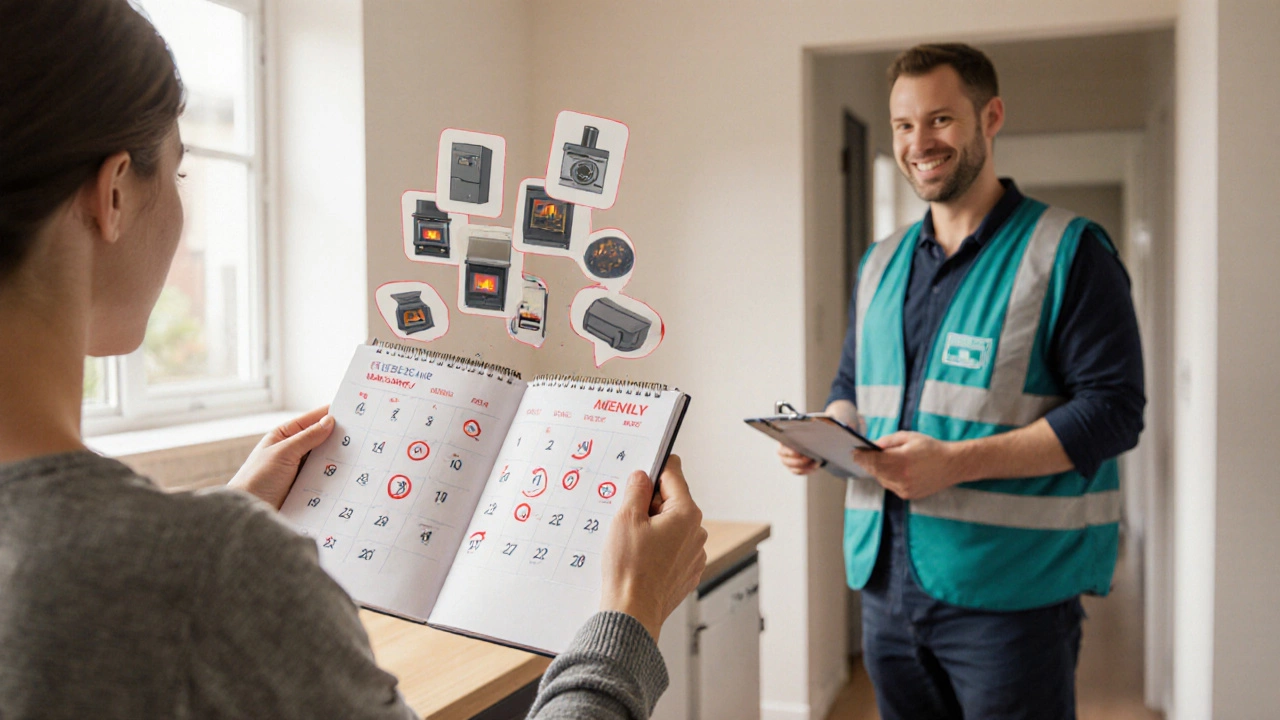When working with gas appliance inspection, a systematic safety review that verifies leak‑free connections, proper ventilation and compliance with local codes. Also known as gas safety check, it helps protect families from dangerous leaks and carbon monoxide exposure. Proper gas appliances, including boilers, ovens and water heaters, need a certified professional to test pressure, flame quality and exhaust pathways every year. A well‑placed carbon monoxide detector, the silent alarm that warns of incomplete combustion, is an essential companion to any inspection and can mean the difference between a safe home and a hidden hazard.
Skipping the annual check might seem harmless, but a tiny leak can quickly turn costly. A faulty gas appliance inspection often uncovers issues that would otherwise lead to higher fuel bills, premature equipment failure or, worst case, a fire. For example, an out‑of‑spec boiler, the heart of most heating systems, can lose efficiency by up to 20% if its burner or heat exchanger is dirty. Fixing that during an inspection is cheaper than replacing the whole unit later. The same logic applies to a gas oven – a cracked igniter or mis‑aligned flame can cause uneven cooking and waste energy. Local regulations in the UK require certified inspections for rental properties and commercial kitchens, so staying ahead of the legal deadline also avoids fines.
Beyond cost, safety is the main driver. Gas leaks are invisible, odorless and can accumulate in low‑lying areas. A professional uses a combination of pressure testing, leak detection spray and combustion analysis to spot problems before they become emergencies. The inspection also checks that vent pipes are clear, that the appliance’s safety shut‑off mechanisms work, and that the gas pressure matches the manufacturer’s specifications. These steps reduce the risk of carbon monoxide poisoning, which often goes undetected until it’s too late. Homeowners who pair the inspection with a functional carbon monoxide detector and regular maintenance of their appliances enjoy peace of mind and a healthier indoor environment.
So, what does a typical inspection look like? First, the technician shuts off the gas supply and inspects all visible connections for signs of corrosion or wear. Next, they run a pressure test to confirm there are no hidden leaks. The burner assembly is then lit, and the flame pattern is examined – a steady blue flame indicates proper combustion, while yellow tips suggest excess carbon buildup. Finally, the exhaust system is checked for blockages and the detector is calibrated. Most visits take between 45 minutes and an hour, and many companies offer a written report with a clear action plan.
Ready to schedule your next check? Below you’ll find a curated collection of articles that dive deeper into specific appliances, common faults and cost‑effective fixes. From boiler replacement cost breakdowns to step‑by‑step guides for diagnosing oven issues, the posts give you the tools you need to keep your gas‑powered home running safely and efficiently.
Posted by
Orin Trask
0 Comments

Learn the legal and practical schedule for checking gas appliances in New Zealand, spot warning signs, and get tips on choosing a licensed gasfitter.
read more